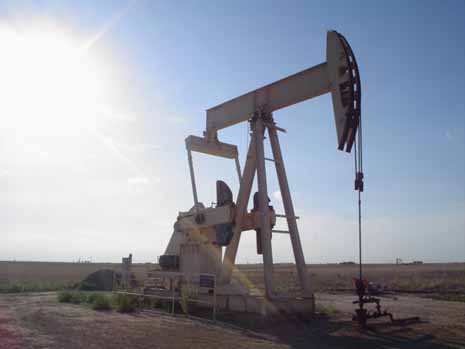Groundwater contamination in the Pavillion area is not just about fracking. The real story is the historic regulatory capture and incompetence that led the state of Wyoming to permit extensive gas development near people’s homes and water wells under a negligent regulatory regime.
Frankly, the state’s and Encana’s focus on absolving fracking from any guilt in the Pavillion contamination is most disingenuous. It is an attempt to divert attention from real and serious contamination by oil and gas extraction practices — allowed by the state — that caused leaking gas wells and unlined production pits filled with wastewater, fracking flowback water, and other chemicals.
Claims by Encana and Wyoming officials that the recent report closes the door on whether fracking caused any of the Pavillion groundwater contamination are an instance of what Shakespeare called “protesting too much.” An extensive peer-reviewed study conducted by investigators at Stanford University and published in the highly respected journal Environmental Science & Technology earlier this year was not even considered in the final Wyoming Department of Environmental Quality report. Stanford investigators found that Wyoming permitted fracking in freshwater aquifers beneath the Pavillion gas field, causing impact to these aquifers and potentially to domestic water wells. They also noted correlation between domestic water well locations and contaminants from 64 unlined pits that had received diesel fuel-based drilling mud, and flowback and produced water. This correlation indicates contamination of actual drinking water.
Homeowners in the area have dealt with oil and gas development impacts and subsequent pollution and have been trying for over a decade to get the state to address these concerns. The state’s answer? Three years of inconclusive studies.
These studies by the state do confirm that bad casing in gas wells and unlined, leaking discharge pits are serious problems in the Pavillion Gas Field. After residents in the area alerted state officials to these problems years ago, the state and Encana ignored, discounted and swept these issues under the rug. Not until the Environmental Protection Agency mentioned the buzzword “fracking” as a potential contributor to the contamination did industry and the state become interested. Rather than cleaning up the contamination, however, they mounted a defense to exonerate fracking and crucify the EPA for even suggesting such a thing.
Even though well casing failures and unlined waste discharge pits have been documented in multiple reports, Wyoming bureaucrats are saying the most important issue is for EPA to plug two monitoring wells the agency drilled. The state claims, without providing proof, that the EPA monitoring wells potentially could provide a pathway for contamination to enter the aquifer – never mind that a dozen or more leaking gas wells and numerous contaminated leaking pits already are contaminating it. Analysis of chemicals used for hydraulic fracturing is rapidly improving. Thus, these monitoring wells should not be plugged and abandoned before samples are collected to allow academic researchers to identify chemicals associated with hydraulic fracturing.
In the state’s quest to exonerate fracking and protect the interests of Encana, DEQ seems to have forgotten its statutory mission “to protect, conserve and enhance the quality of Wyoming’s environment for the benefit of current and future generations.” Instead, 16 years after residents began to raise concerns over contaminated drinking water, all the state has to offer is an ambiguous final report that identifies significant problems but lacks long-term solutions. Adding insult to injury, the state is also telling Pavillion-area residents that the clean drinking water provided to them by Encana will end in March of 2017. Instead of providing a long-term safe water supply to impacted homeowners near unlined leaky pits and leaking gas wells the state and Encana spent a million dollars trying to close the book on Pavillion and to absolve Encana of responsibility.
The fact remains that Wyoming permitted the activities that caused this pollution and Wyoming has an obligation to Pavillion-area residents to address ongoing contamination by: 1) Providing homeowners with an adequate long-term supply of clean domestic water, 2) Installing additional monitoring wells in the Wind River Formation to define contamination below surficial deposits where domestic water wells are screened, 3) Applying the DEQ Voluntary Remediation cleanup program to more contaminated pit sites and posting all sample results on its internet site to ensure new transparency and 4) Finally cleaning up and reclaiming old pit sites.
Anything less is a shameful dereliction of duties to Wyoming citizens.
John Fenton is chair of the Pavillion Area Concerned Citizens. Bob LeResche is Chair of the Powder River Basin Resource Council. Both organizations are dedicated to ensuring the oil and gas contamination in the Pavillion Gas Field is cleaned up and homeowners have a clean, reliable source of water. The Casper Star-Tribune published this commentary on December 3, 2016.

